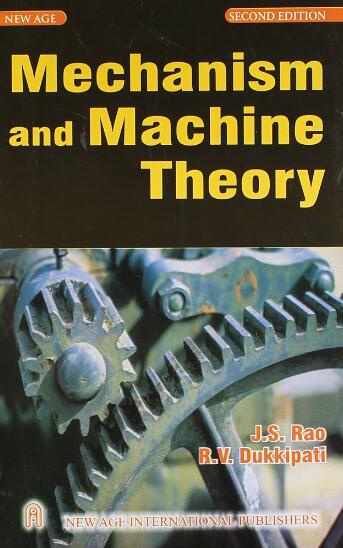利用任意预弯梁设计和优化顺应式恒扭矩机构
IF 4.5
1区 工程技术
Q1 ENGINEERING, MECHANICAL
引用次数: 0
摘要
顺应式恒转矩机构(CCTM)有望用于精确操纵和(力或转矩)平衡装置。在本文中,我们提出了两种利用变曲率梁的 CCTM。刚度组合顺应式恒转矩机构(SC-CCTMs)是通过组合正刚度结构和负刚度结构设计的,而直接零刚度顺应式恒转矩机构(DZS-CCTMs)则是通过使用零刚度结构设计的。在本文中,我们开发了一种综合方法来分析上述 CCTM。根据该方法,我们分别对负刚度和正刚度的直梁和变曲率梁进行了优化,从而设计出 SC-CCTM。此外,还对恒定曲率梁进行了零刚度优化,以设计 DZS-CCTM。与现有结果相比,优化后的 SC-CCTM 具有恒扭矩可调的特点,优化后的 DZS-CCTM 具有更小的预载范围和更宽的恒扭矩范围。最后,运动静力学模型已通过有限元法(FEM)验证,与 FEM 相比,误差小于 3%。优化后的 DZS-CCTM 和 SC-CCTM 原型已经制作完成并通过测试,进一步验证了所提设计方法的可行性。本文章由计算机程序翻译,如有差异,请以英文原文为准。
Design and optimization of compliant constant-torque mechanisms utilizing arbitrary pre-curved beams
Compliant constant-torque mechanisms (CCTMs) have the potential to be used in precise manipulation and (force or torque) balance devices. In this paper, we propose two types of CCTMs utilizing varying-curvature beams. The stiffness-combination compliant constant-torque mechanisms (SC-CCTMs) are designed by combining positive-stiffness structures and negative-stiffness structures, whereas direct-zero-stiffness compliant constant-torque mechanisms (DZS-CCTMs) are designed by using zero-stiffness structures. In this paper, we develop a comprehensive methodology to analyze the mentioned CCTMs. Based on the methodology, a straight beam and a varying-curvature beam are optimized for negative stiffness and positive stiffness respectively to design SC-CCTMs. Besides, a constant-curvature beam is optimized for zero stiffness to design DZS-CCTMs. Then, the optimized SC-CCTM has the characteristic of adjustable constant-torque, and the optimized DZS-CCTM has a smaller preload range and a wider constant-torque range compared to existing results. Finally, the kinetostatic model has been verified using finite element method (FEM), with an error of less than 3% compared to FEM. The prototype of the optimized DZS-CCTM and SC-CCTM have been fabricated and tested to further verify the feasibility of the proposed design methodology.
求助全文
通过发布文献求助,成功后即可免费获取论文全文。
去求助
来源期刊

Mechanism and Machine Theory
工程技术-工程:机械
CiteScore
9.90
自引率
23.10%
发文量
450
审稿时长
20 days
期刊介绍:
Mechanism and Machine Theory provides a medium of communication between engineers and scientists engaged in research and development within the fields of knowledge embraced by IFToMM, the International Federation for the Promotion of Mechanism and Machine Science, therefore affiliated with IFToMM as its official research journal.
The main topics are:
Design Theory and Methodology;
Haptics and Human-Machine-Interfaces;
Robotics, Mechatronics and Micro-Machines;
Mechanisms, Mechanical Transmissions and Machines;
Kinematics, Dynamics, and Control of Mechanical Systems;
Applications to Bioengineering and Molecular Chemistry
 求助内容:
求助内容: 应助结果提醒方式:
应助结果提醒方式:


